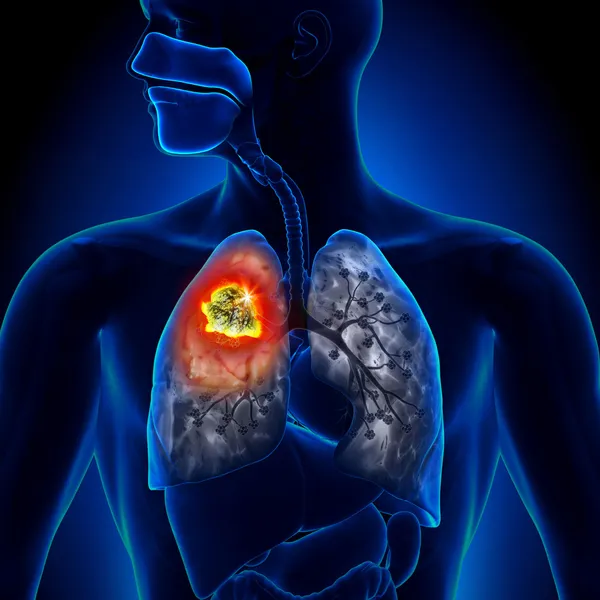Introduction:

Lung cancer, a formidable adversary that claims the lives of millions worldwide, demands our utmost attention. Its intricate nature necessitates a deep understanding of its causes, vigilant recognition of symptoms, and an exploration of the most effective treatment options available. By shedding light on the multifaceted aspects of this disease, we can equip ourselves with the knowledge to combat it effectively.
Causes and Risk Factors:
While smoking remains the leading cause of lung cancer, responsible for approximately 85% of cases, it is crucial to acknowledge that non-smokers can also develop the disease.
In addition to tobacco smoke, factors such as exposure to second hand smoke, occupational hazards like asbestos and radon gas, environmental pollutants, genetic predisposition, and a family history of lung cancer contribute to its development. By understanding these risk factors, we can take proactive steps towards prevention.
Types of Lung Cancer:
Lung cancer manifests in two primary forms: non-small cell lung cancer (NSCLC) and small cell lung cancer (SCLC).
NSCLC, accounting for the majority of cases, encompasses subtypes such as adenocarcinoma, squamous cell carcinoma, and large cell carcinoma. SCLC, although less prevalent, tends to grow more aggressively. Recognizing the specific type of lung cancer is pivotal for tailoring appropriate treatment strategies.
Symptoms and Early Detection:
Lung ca symptoms vary depending on the stage and type of the disease. Persistent cough, coughing up blood, shortness of breath, chest pain, hoarseness, unexplained weight loss, fatigue, and recurrent respiratory infections may be indicative of lung cancer.
Early-stage lung ca might present no noticeable symptoms, underscoring the importance of regular screenings for individuals at high risk.
Timely diagnosis significantly improves treatment outcomes and overall prognosis.
Diagnosis and Staging:
Accurate diagnosis relies on a combination of imaging tests, such as X-rays, CT scans, and PET scans, along with biopsies to analyse lung tissue or fluid samples.
Staging lung ca is crucial for determining the extent of its spread.
Stages range from localized tumors confined to the lungs (Stage I) to advanced cancer with metastasis to other organs (Stage IV). Precision in diagnosis allows healthcare professionals to design tailored treatment plans.
Comprehensive Treatment Approaches:
The arsenal against lung cancer compris:es various treatment modalities, including surgery, radiation therapy, chemotherapy, targeted therapy, and immunotherapy.
Surgery aims to remove tumors and surrounding tissues, with options ranging from lobectomy to minimally invasive techniques.
Radiation therapy employs high-energy radiation to destroy cancer cells or inhibit their growth. Chemotherapy utilizes drugs to eradicate cancer cells systematically.
Targeted therapy focuses on specific genetic mutations within cancer cells, while immunotherapy harnesses the body’s immune system to combat the disease.
A combination of these treatments may be employed based on individual circumstances, emphasizing the importance of a multidisciplinary approach.
Prevention and Promising Outlook:
Preventing lung cancer is an active endeavour within our control.
By abstaining from smoking, avoiding second hand smoke, minimizing exposure to occupational hazards, and reducing environmental pollutants, we can significantly reduce the risk.
For individuals with a higher predisposition to lung ca, participation in screening programs, such as low-dose computed tomography (LDCT) scans, can facilitate early detection.
While lung ca remains a formidable opponent, ongoing advancements in research and treatment options offer hope. Collaborative efforts between healthcare professionals, researchers, and the community at large contribute to a brighter outlook in the fight against lung cancer.
Conclusion:
Lung cancer remains a major health concern worldwide, affecting both smokers and non-smokers. Understanding the causes, recognizing the symptoms, and seeking medical attention without delay are vital for early detection and optimal treatment outcomes. By adopting preventive measures and supporting ongoing research, we can make progress in reducing the burden of lung ca and improving the lives of those affected by this devastating disease.

